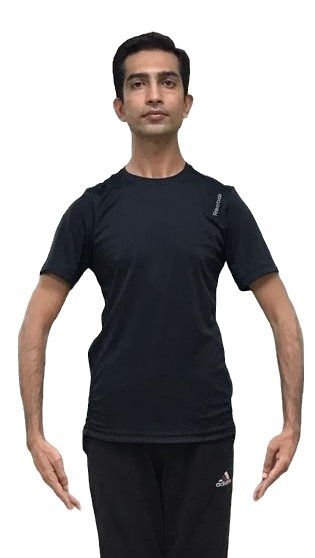Ballet Position of the Arms: Different style but same technique.
- Dinesh Rathod

- Sep 9, 2020
- 3 min read
Background story for the first blog
I have been on a quest to know the details and depth of ballet. It’s a vast ocean to swim without having a direction or a guide to reach my goal. But I have trusted my instinct and had determination to follow till the end. The journey has just began and still long way to go.
The reason I chose this topic for my first blog is because this is where it all began. I started learning ballet in Vaganova style and was shown 5 different positions of arms. But when I read the book written by Vaganova herself, it started a conflict in my mind about the styling. There was another book which showed different position of arms. I understand that the technique would remain the same but the small difference is what makes it interesting. So without further ado let’s get right to the topic.
History behind the position of arms:
Pierre Beauchamp (also Beauchamps, called "Charles" or Charles-Louis Beauchamp) (30 October 1631 – February 1705) was a French choreographer, dancer and composer, and the probable inventor of Beauchamp–Feuillet notation.
Writing some years after the actual events, Pierre Rameau credits Beauchamp with the codification of the five positions of the feet[2] in classical ballet, as well as a role in the development of the use of arms[3] (note though that, unlike the positions of the feet, the use of arms in baroque dance differs significantly from their use in ballet). The codification method was printed in 1700 by Raoul-Auger Feuillet, who published notated dance scores, and became known as "Beauchamp–Feuillet notation." It was slightly modified by Pierre Rameau in 1725, but continued to be used to record dances for the stage and for domestic use throughout the eighteenth century.
In 1725, dancing master Pierre Rameau credited the codification of these five positions to choreographer Pierre Beauchamp.[1] Two additional positions, known as the sixth and seventh positions, were codified by Serge Lifar in the 1930s while serving as Ballet Master at the Paris Opéra Ballet, though their use is limited to Lifar's choreographies.[2][3] The sixth and seventh positions were not Lifar's inventions, but revivals of positions that already existed in the eighteenth century, when there were ten positions of the feet in classical ballet.[4]
As part of his effort to revitalize dance, Lifar thought the basic principles of ballet—specifically the five positions of the feet—denied mobility for the dancer. He codified two additional positions, known as the sixth and seventh positions, with the feet turned in, not out like the first five positions.[4][5] The sixth and seventh positions were not Lifar's inventions, but revivals of positions that already existed in the eighteenth century, when there were ten positions of the feet in classical ballet;[6] and their use is limited to Lifar's choreographies.
For information about his work, you can visit the page: http://obvil.sorbonne-universite.site/corpus/danse/html/rameau_maitre-a-danser_1725_orig.html
Second Part, Chapter 1 (Position of Ballet Arms)

French: De Départ, Preparation, Au Repos, or Première en Bas
R.A.D.: Bras Bas
Soviet Russian: Preparatory Position
Cecchetti: Fifth en Bas
Bournonville: Bras Bas
Tip: Zero position, (for kids imagination) as they need show Zero with arms

Cecchetti: First Position
Bournonville: First Position

R.A.D.: First Position
French: First Position
Soviet Russian: First Position
Cecchetti: Fifth Position en Avant
Bournonville: Bras Arrondis Devant or First Position en Avant

R.A.D.: Demi-seconde. The fingertips should touch the tutu without bending elbow (for women)
Cecchetti: Demi-seconde of Allegro or Adagio.
Bournonville: Demi-seconde

R.A.D.: Second Position
French: Second Position
Soviet Russian: Second Position
Cecchetti: Second Position
Bournonville: Bras à la Ligne or Second Position

R.A.D.: Third Position
French: Third Position
Soviet Russian: Small Pose
Cecchetti: Fourth Position en Avant
Bournonville: Third Position Low

R.A.D.: Fourth Position
French: Third Position
Soviet Russian: Big Pose
Cecchetti: Fourth Position en Haut
Bournonville: Third Position en Haut

R.A.D.: Fourth Position Crossed‡
French: Fourth Position
Cecchetti:
Bournonville: Fourth Position

R.A.D.: Fifth Position
French: Fifth Position or Bras en Couronne
Soviet Russian: Third Position
Cecchetti: Fifth en Haut
Bournonville: Á la Couronne or Fifth Position






Comments